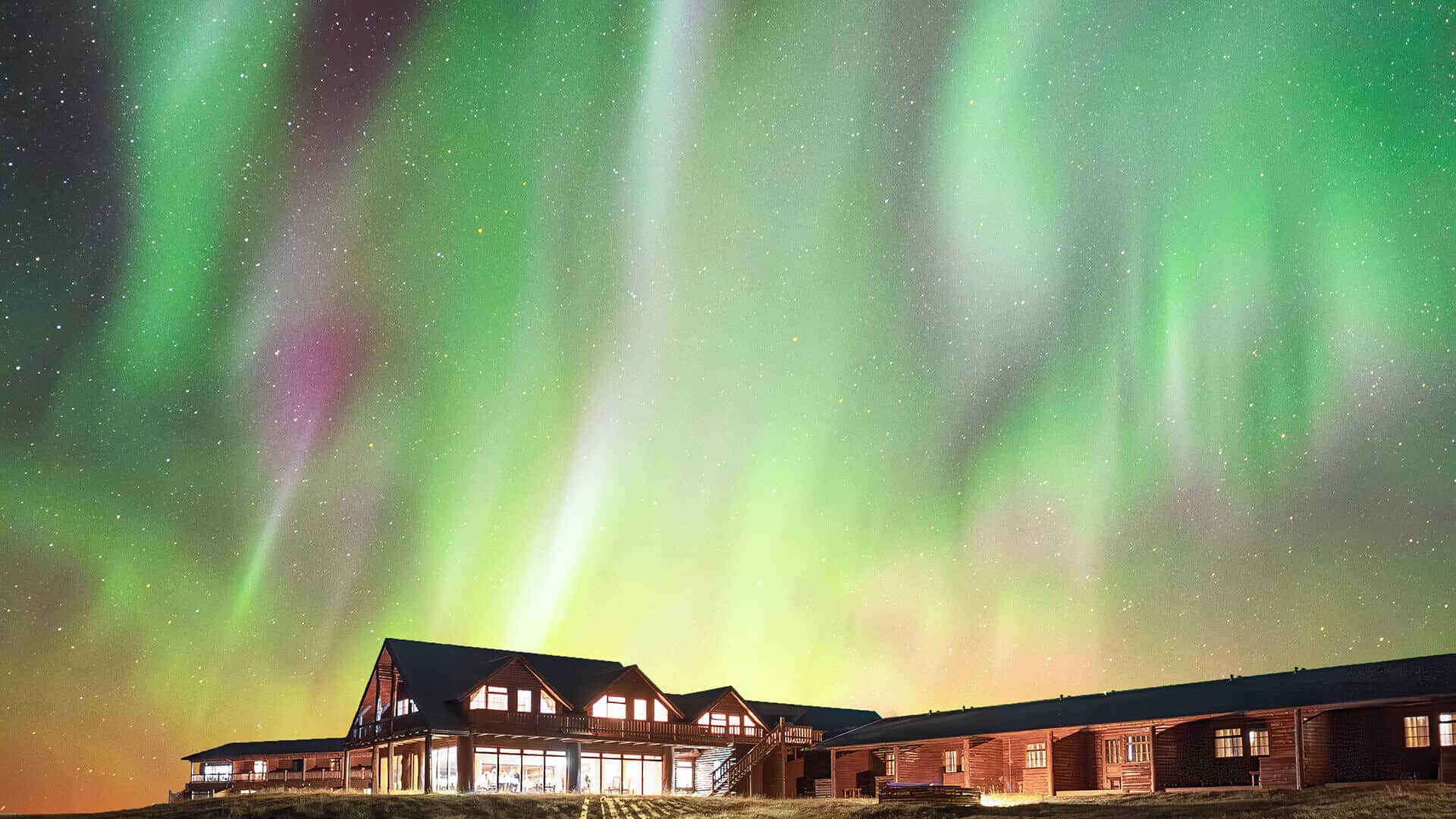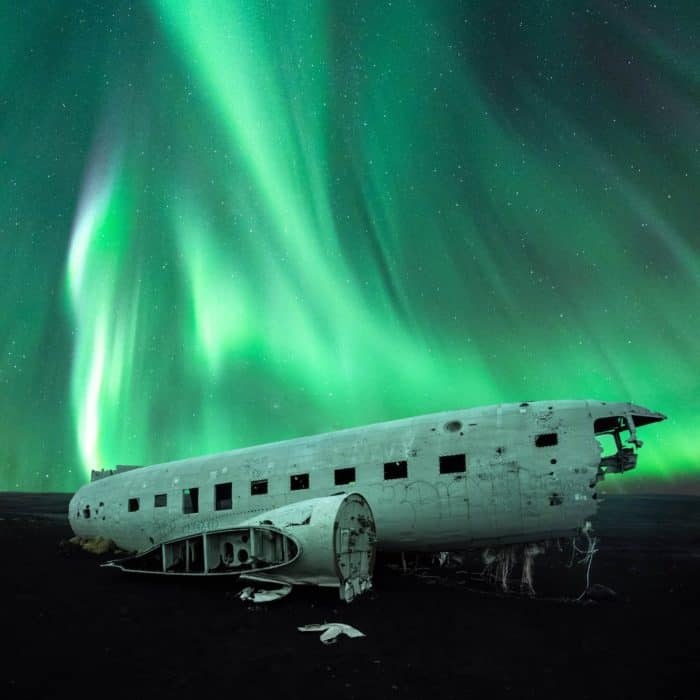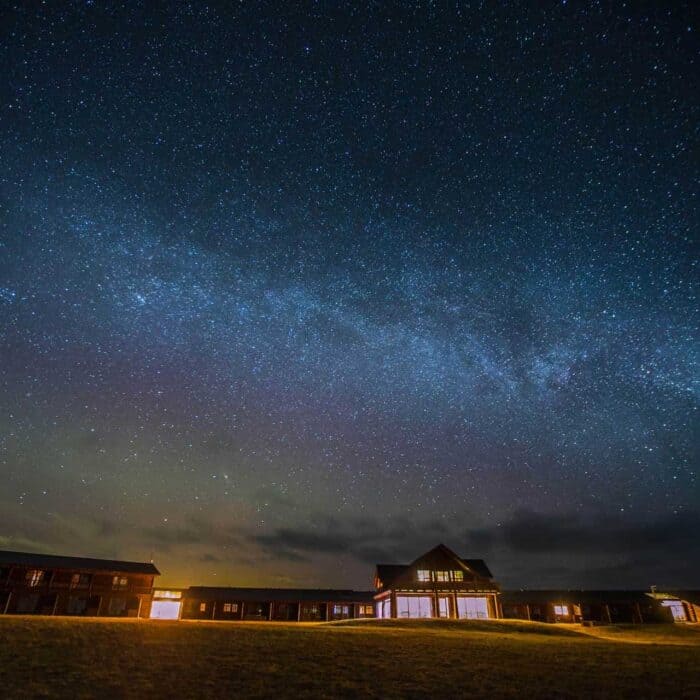Table of Contents
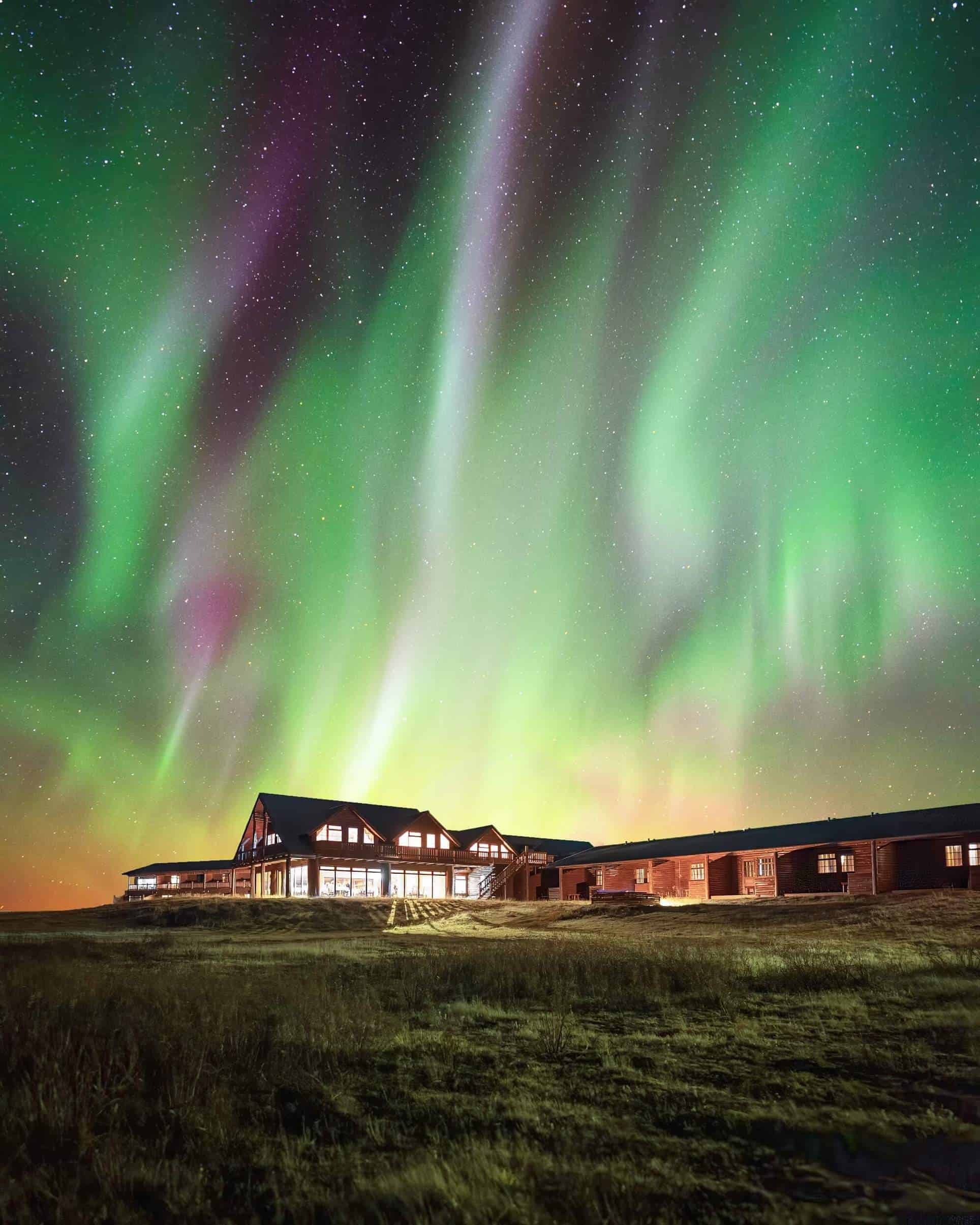
When is the Best Time to See the Northern Lights in Iceland?
The northern lights–also known as the aurora borealis–can be seen in Iceland from the end of August until early April. As the days begin to get shorter and the nights become darker, our staff starts to keep an eye on the night sky. If the aurora should appear, we use our aurora wake-up system to notify our guests. This means that you can rest easy knowing that we will wake you if the northern lights emerge.
When Does Aurora Season Start?
In recent years, the first sighting of the northern lights has occurred around the 20th of August. On average, we see the northern lights about 10 times per month. As the northern lights are a natural phenomenon, it is impossible to predict the exact day or time when they could be visible. However, there are some key factors that can assist us to get an idea about whether the northern lights might appear.
Can the Northern Lights Be Seen During Summer?
To see the northern lights we need dark nights, clear skies and solar activity. In the summertime, Iceland has 24 hours of daylight; therefore, we are unable to see the northern lights during the summer months even if there is high solar activity. The night skies begin to darken at the end of August and stay dark until the beginning of April. We recommend that you book your trip to Iceland to see the aurora during the fall, winter or early spring.
Are the Northern Lights Visible in All Kinds of Weather?
If the sky is cloudy, it is impossible to see the northern lights. Even very high clouds can interfere with an aurora sighting. Icelandic weather can be unpredictable; as a result, we recommend that our guests book longer stays to maximize their chances of seeing the northern lights. Staying with us for three or four days gives you a better chance of seeing the aurora.
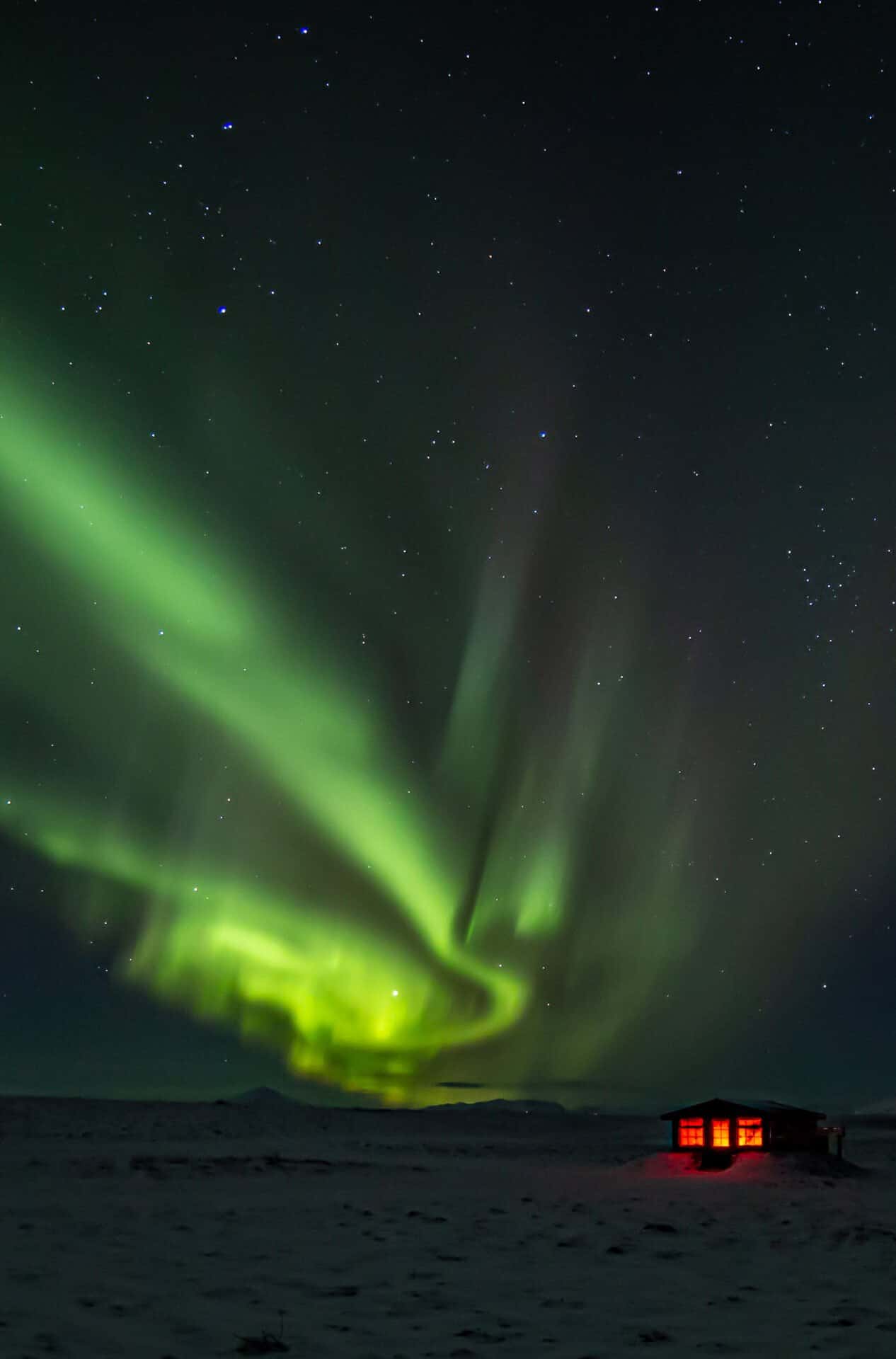
Can You Predict the Aurora?
Though we are never able to fully predict whether the aurora will appear, there are numerous Aurora forecast sites that are fairly accurate. We recommend that you check auroraforecast.is. There, you will see a map of Iceland that shows the current and predicted cloud cover within a 72-hour period. You will also see a Kp-index forecast gauge. The Kp-index shows values 0 to 9; the higher the reading, the more solar activity and the greater likelihood of seeing the northern lights.
Short Notice Bookings Can Be A Good Idea
If booking a holiday with short notice is an option for you, then we do recommend following the Aurora forecast prior to making your booking. If the long-term forecast shows high solar activity, you can go ahead and book your stay. There is always a better chance of seeing the northern lights when there is high solar activity, no clouds and dark skies. Remember that the best time to view the northern lights in Iceland is between late August and early April.
Points to remember when hunting for the Northern Lights:
- Aurora season lasts from the end of August until the beginning of April
- We need dark nights, clear skies and solar activity
- Stay away from artificial light pollution
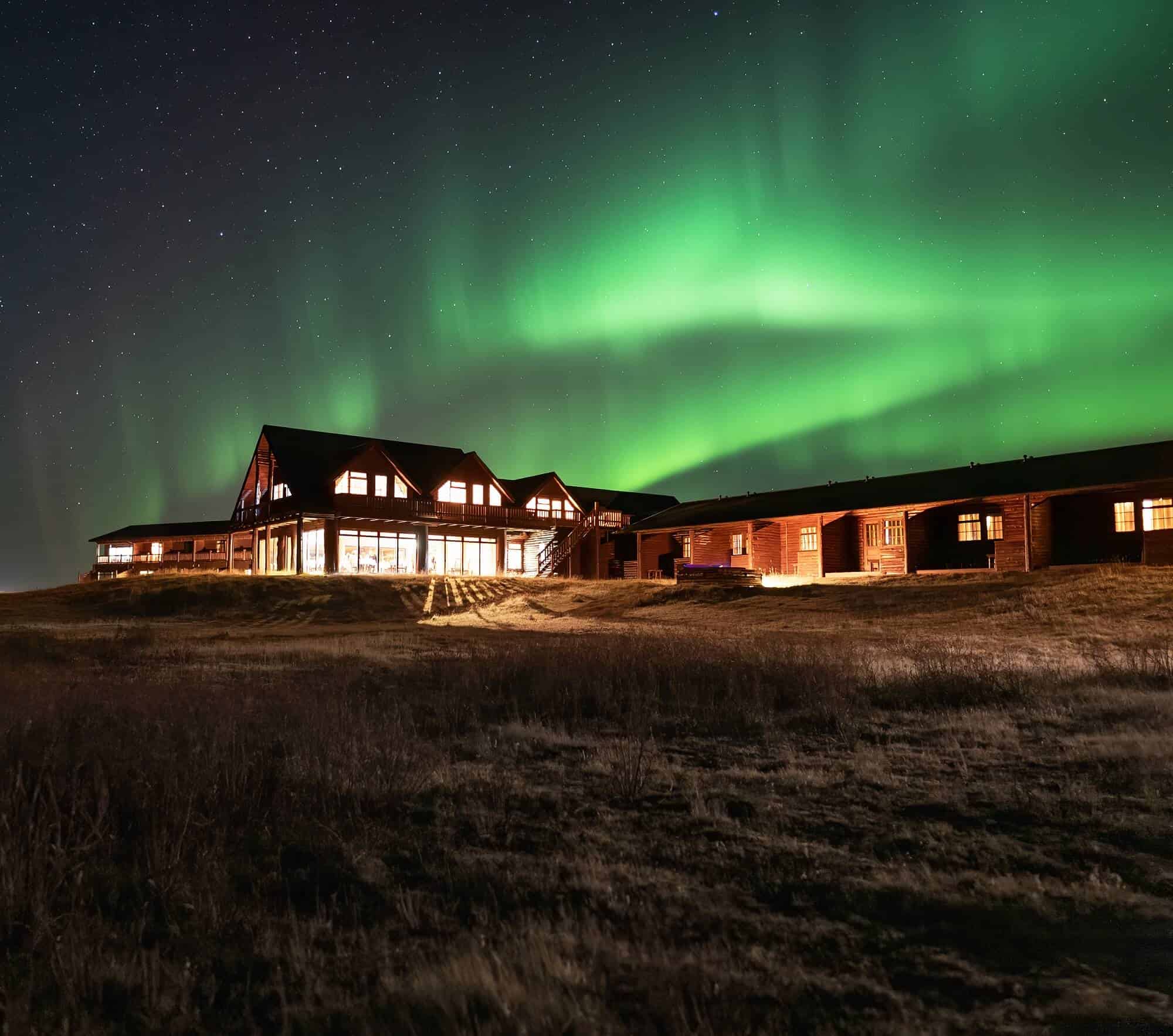
Hotel Rangá’s Northern Lights Wake-Up Service
To maximize our guests’ chances of seeing the lights, we offer a special northern lights wake-up service. When you arrive at Hotel Rangá, we will remind you to press a button on the phone in your room that indicates that you would like to be woken up if the northern lights should appear. This means that you can relax with a drink at the bar, enjoy a nice evening meal at our Rangá Restaurant or soak in our geothermal hot tubs while we are on the lookout for the aurora. You can also get a good night of sleep without periodically waking up to check for the aurora. We will simply call your room if the northern lights begin their dance across the night sky.
Where Is the Best Place to See the Northern Lights in Iceland?
The northern lights may be seen anywhere in Iceland including the capital city of Reykjavik. However, for a better view of the northern lights it is best to go out of the city, away from light pollution. Hotel Rangá has often been named as one of the top places to view the northern lights. We offer our guests luxurious amenities in the Icelandic countryside where there is limited light pollution.
Furthermore, Hotel Rangá northern lights hotel is located in the midst of South Iceland, a short drive from popular sights. Guests at Hotel Rangá can easily visit Seljalandsfoss waterfall, Skógafoss waterfall, Reynisfjara black sand beach, Þórsmörk national park, the Eyjafjallajökull glacier and sights along the Golden Circle such as Gullfoss and Geysir. Our concierge can help you plan and book many activities and guided tours; visit our Adventure Tours and Sights pages for more suggestions of activities in our area.
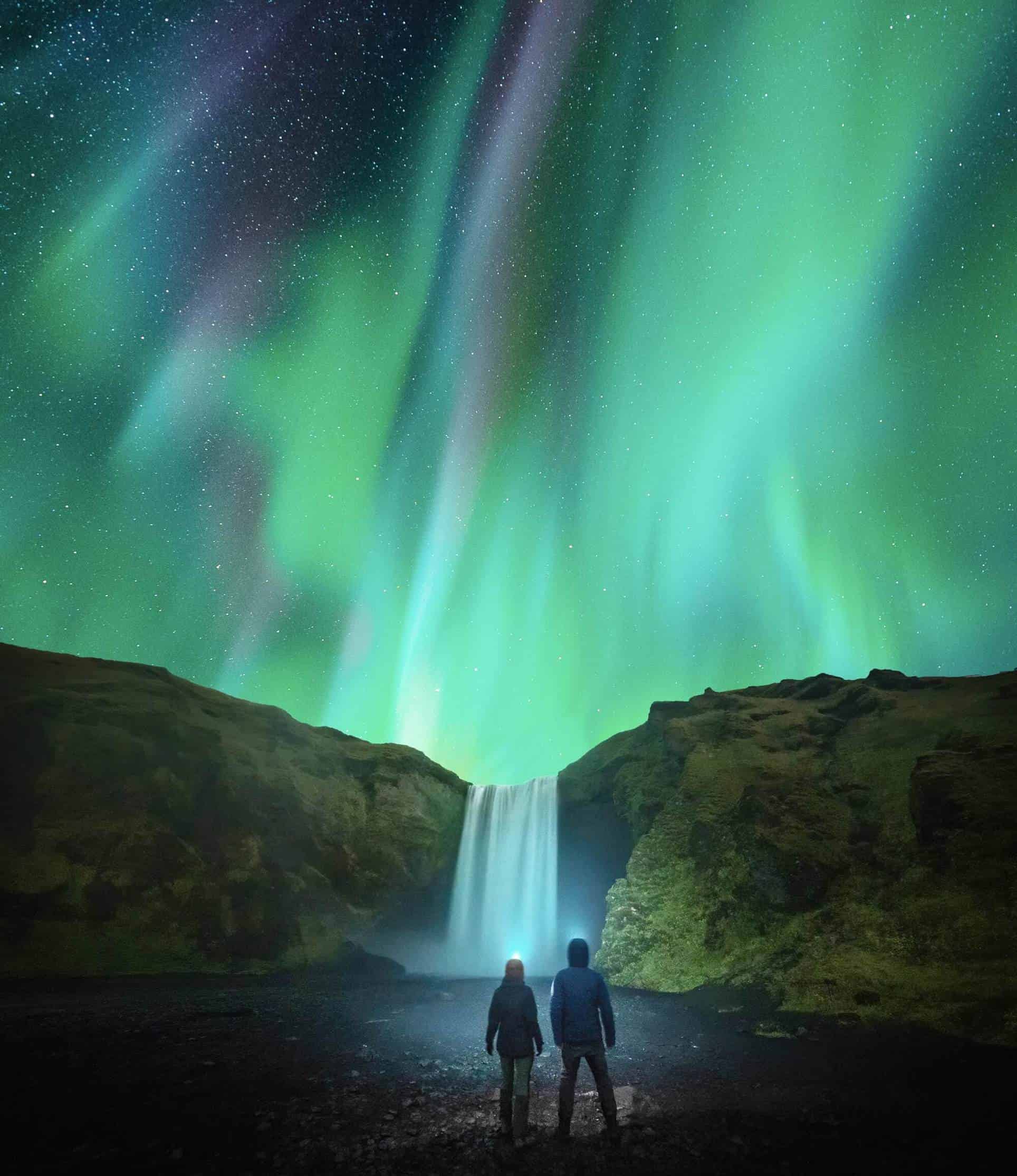
What Exactly Are the Northern Lights?
The northern lights are a natural phenomenon that appear when solar winds interact with gases in Earth’s upper atmosphere. These “winds” are electrically charged particles emitted by the sun. The scientific name for the northern lights is aurora borealis.
The origin of the northern lights begins on the surface of the sun when solar activity ejects a cloud of gas. This process is called CME or Coronal Mass Ejection. If these gases reach earth, they then collide with Earth’s magnetic field. When the CME collides with the magnetic field, it causes complex changes to happen. These changes generate currents of charged particles, which then flow along lines of magnetic force. In Earth’s upper atmosphere these particles collide with oxygen and nitrogen atoms and produce dazzling auroral light.
What Colors Are the Northern Lights?
Most often, the northern lights are green. However, if you are lucky, you may see vibrant colors of red, yellow, blue, or violet dancing over the night sky.
A few different factors determine the color of the northern lights:
- The composition of gases in Earth’s atmosphere
- The altitude of where the northern lights occur
- The density of the atmosphere and the level of energy involved
Green Northern Lights:
Green is the most common color. Produced at altitudes of 100 to 300 km, it occurs when charged particles collide with oxygen molecules.
Pink Northern Lights:
At altitudes of around 100 km, the edge of the northern lights is pink
Red Northern Lights:
At altitudes of 300 to 400 km this pink edge will turn red.
Blue or Purple Northern Lights:
Most difficult for our eyes to see in the night sky are blue or purple northern lights. Hydrogen and helium molecules produce blue or purple northern lights.
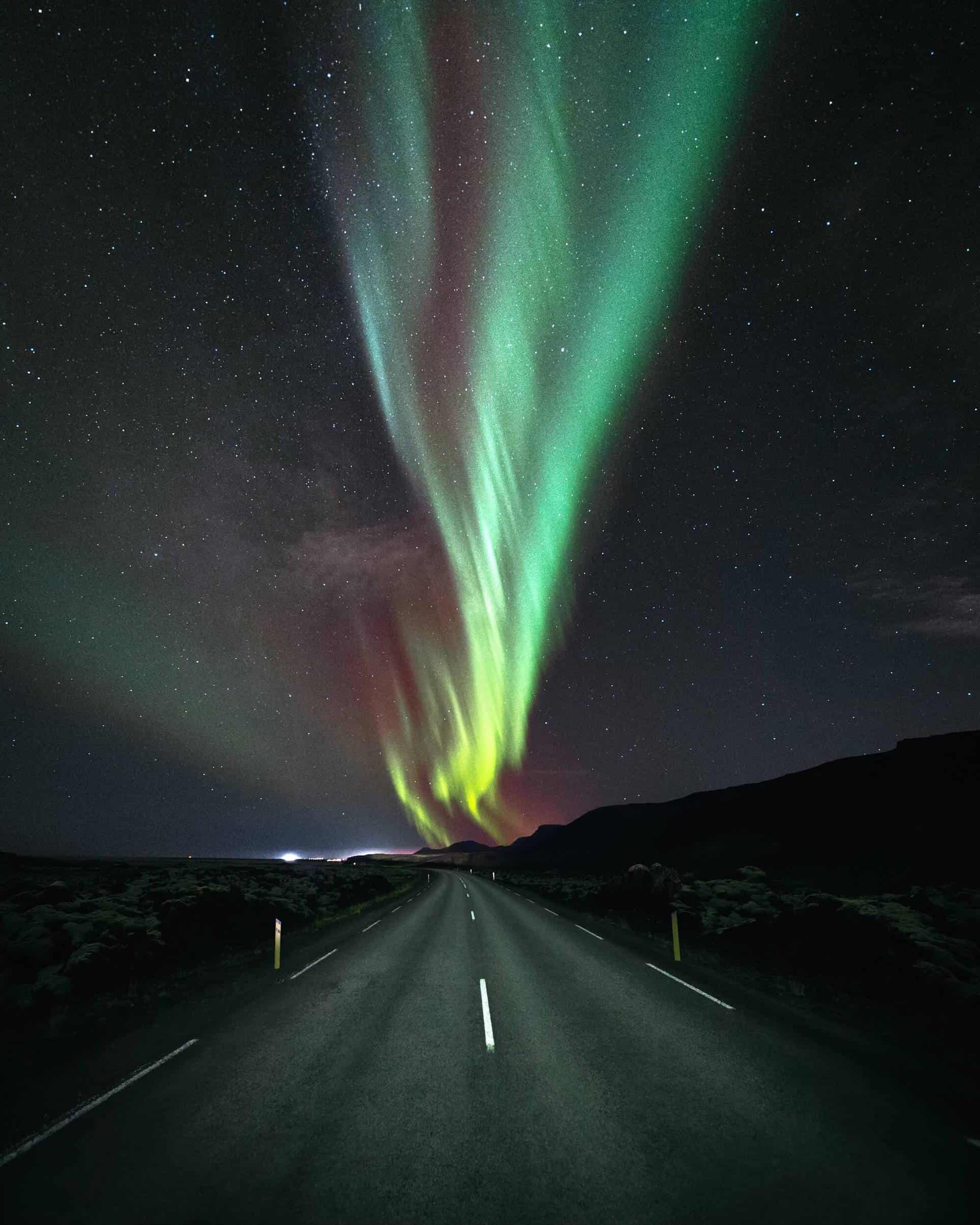
Seeing the Northern Lights in Iceland- A Magical Experience
You don’t need any special equipment to see the northern lights, just clear skies, limited light pollution and a bit of luck. The best time to see the northern lights in Iceland is between late August and early April. It’s true that high-tech cameras can capture the northern lights even when there is low solar activity. However, they can never really capture the magic of laying under the northern lights and enjoying their movement around the night sky. Seeing this wonderful light show with different colors dancing and revolving before your eyes is nothing short of incredible, and remember, each display is completely unique.

